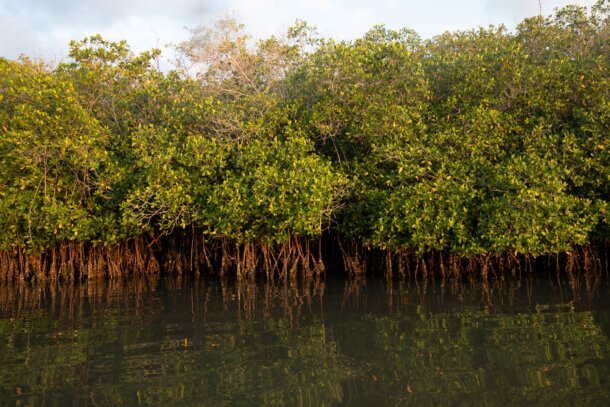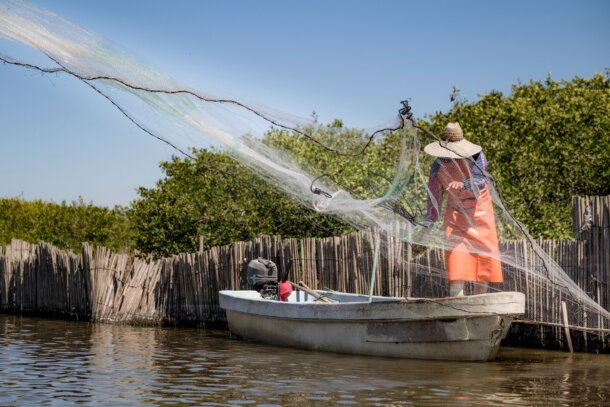Harnessing Artificial Intelligence for Conservation: A Look at ManglarIA | Blog | Nature
This post comes to PBS Nature from World Wildlife Fund (WWF). WWF and Nature are collaborating on a series of blog posts from WWF conservation scientists that will share the stories and motivations behind cutting-edge conservation research.

Mangroves in Marismas Nacionales Biosphere Reserve, Nayarit © Jason Houston, WWF-US
My fascination with artificial intelligence (AI) sparked in 1978 when I encountered a computer for the first time. It wasn’t a sleek device but rather a teletype machine that consisted of a typewriter connected to a mainframe computer via a telephone and an acoustic coupler. It was housed in a glass room in the middle of my local library, and it captivated me. The first program I ran on it was tic-tac-toe, and the machine was an expert. I wondered how that was possible, and the experience sparked my curiosity, leading me to delve deeper into the realm of AI.
AI, broadly defined as intelligent behavior performed by machines, has been around since the 1950s but has really exploded into the mainstream in the past 10 years. What was once a novelty at my local library has become ingrained in our everyday lives, igniting extensive discussion and exploration in numerous fields, including conservation. There are countless examples of AI being utilized for the environmental good, from identifying species in images taken from motion-sensitive cameras to predicting deforestation before it happens and minimizing human-wildlife conflict and poaching.
World Wildlife Fund (WWF), the organization I work for, teamed up with several partners to launch one such initiative, known as ManglarIA, “AI for Mangroves” in Spanish. The initiative, supported by Google.org, showcases how AI can be harnessed to address pressing environmental challenges, specifically for mangrove conservation. Mangroves are coastal forests that absorb and store significant amounts of carbon dioxide while protecting coastal communities and infrastructure—and they are increasingly under threat from climate change. To conserve these critical ecosystems, scientists need to better understand how they’re affected by environmental factors like increased temperatures, sea-level rise, and more.
ManglarIA is working to fill this knowledge gap by using a range of advanced technologies, including AI, to analyze climate-sensitive variables and their impact on mangrove health and their capacity to store carbon, protect coastlines, and sustain fisheries. We will deploy various sensors—such as weather stations, camera traps, and drones—in two biosphere reserves on Mexico’s Pacific and Gulf of Mexico coasts. These sensors and other technologies will provide huge amounts of data on mangrove health in these locations. AI will then look for patterns in the data to help answer questions like how quickly can mangroves recover from hurricanes or which mangrove species are most resilient to environmental change? This information will be used to adapt long-term strategies for mangrove conservation to ensure these ecosystems are thriving for years to come.
Though AI and technology play big roles in ManglarIA, people are still very much at the center of the work. Community members are actively involved in installing, maintaining, and collecting data from sensors, and field experts are using validation techniques honed over decades to ensure all AI-powered analyses are accurate and reliable. The project adheres to strict data ethics, respecting data sovereignty and privacy, and aims to engage local communities in the data collection process. Communities are expected to benefit from information to support their livelihoods, including fishing and beekeeping, in a changing climate.

Alejandro Lopez casts net fishing for shrimp in Laguna Chumbeño, Francisco © Jason Houston, WWF-US
I’ve always believed in the transformative potential of technology to address environmental challenges. ManglarIA exemplifies this belief, using AI to inform climate-smart ecosystem restoration and management. Data from this project will be made available to governments, conservation organizations, research institutions, and local communities. Ultimately, ManglarIA aims to become a model for other geographies and ecosystems globally.


